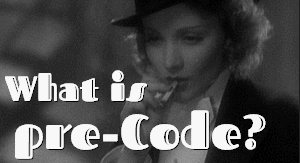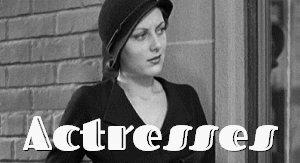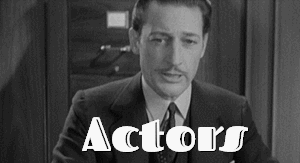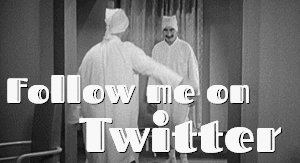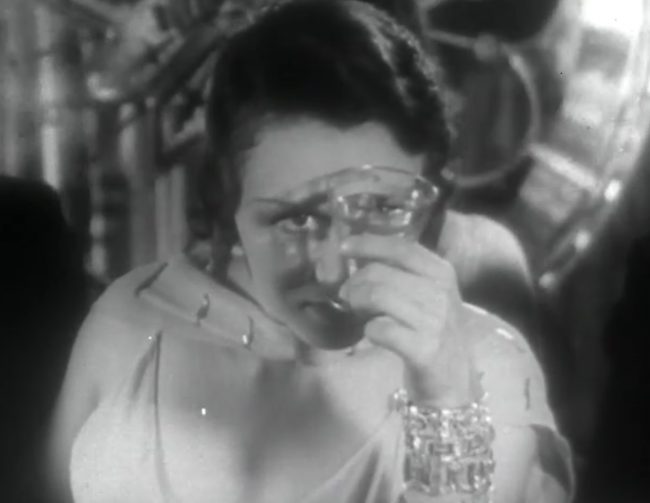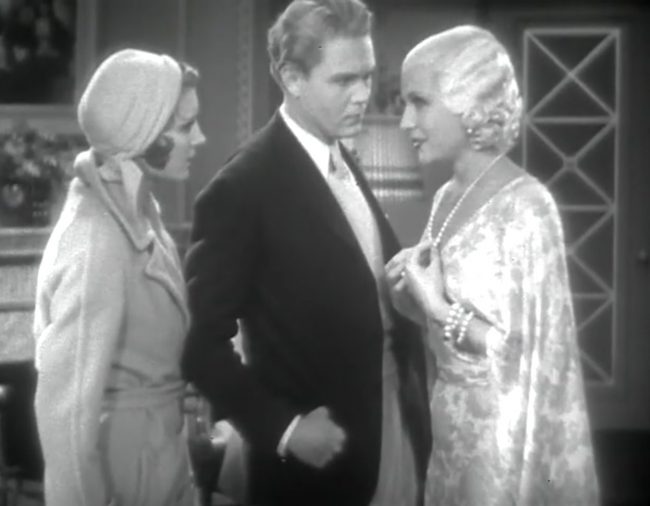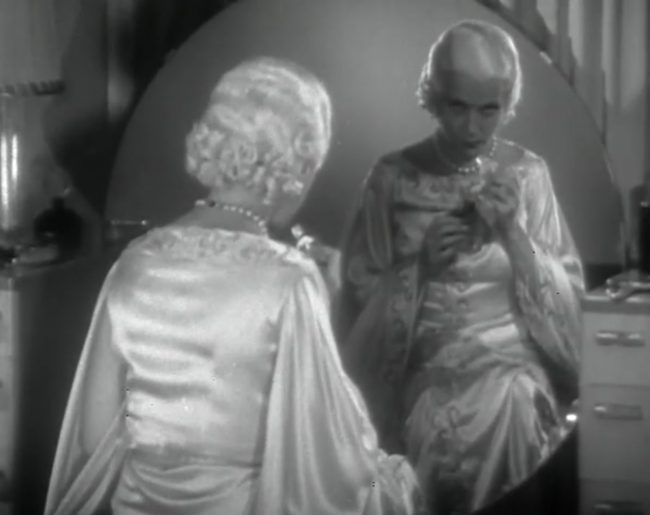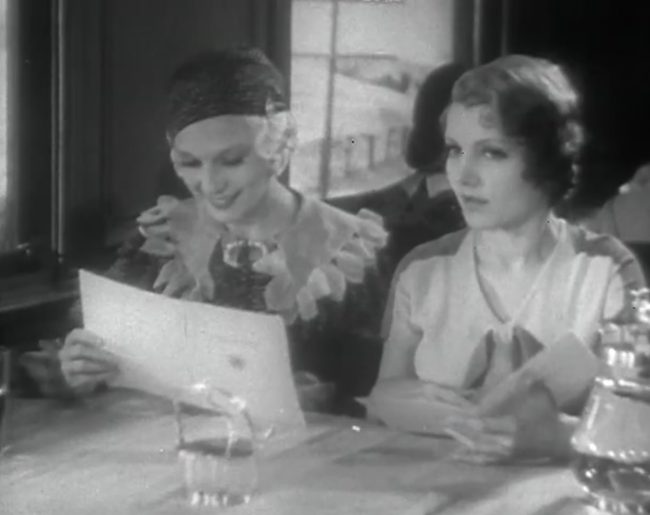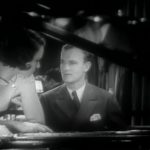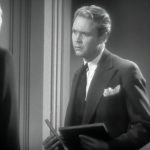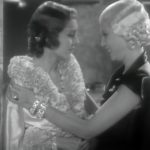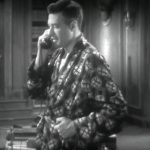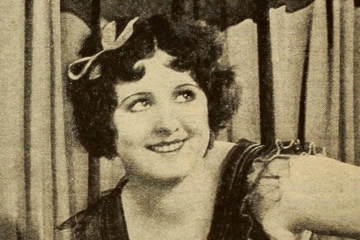
 |
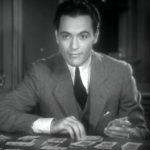 |
 |
| Lee Peggy Shannon |
Tom Charles “Buddy” Rogers |
Jackie Lilyan Tashman |
| Released by Paramount Directed by Richard Wallace Run time: 73 minutes |
||
Proof That It’s a Pre-Code Film
- It’s set in Reno, the 1930s libidinal capital of the United States! There are divorces, marriages, remarriages, and not-so-discreet affairs. We even have a a lake’s bottom covered in discarded wedding rings.
- We kick off the movie with a woman killing herself. The hotel desk staff is pleased to know that they can book her room for someone else.
- “Why don’t you hit her on the head? Lock her up ’til she comes to her senses?”
- “I don’t care if she is my mother. Any woman who can have one husband after another is no more than a–“
- Everyone is boozed to the gills all the time. Not a bad idea, really.
Road to Reno: Something Old
“Gee, it’s funny. You cry at a wedding, and whoop it up at a divorce!”
“Just goes to prove that sex is a demoralizing influence.”
I usually give Mordaunt Hall a lot of crap. The New York Times’ film critic of the early 1930s is often maddeningly dull with his film reviews (which are the easiest to access of the era) and usually doesn’t review but reports on the reaction of the audience with fevered attention. However, his review of today’s Road to Reno hits the nail on the head, where he observes, with genuine wit, after an early suicide in the film, “it is reasonable to assume that there are to be no further killings.”
Yes, Road to Reno, whose opening has some sparkle of life, quickly turns to a hankie-wringing drama with a surprisingly high body count. Jackie (Tashman) has decided to divorce Robert (Irving Pichel), and while the split is amicable, her two adult children, Lee (Shannon) and Jeff (Tom Douglas), are fretting. What does it say about them, that their mother is a gadabout divorcee?
Jackie’s divorce habit is quickly explained; her first husband died, making her an emotional cripple when it comes to long term relationships. This excuse is a hand wave, painting the movie’s view of divorce as somewhere between mental defect and moral derangement. For Jeff and Lee, they see themselves within the social customs of the time. They paint themselves as broken, immoral and irredeemable because of their mother’s flighty approach to matrimony. They’re clearly adults undergoing an adolescent crisis.
On a train, Lee meets Tom, a mining engineer who is leaving soon for Burma. Lee finds herself attracted to his negligible charms, which mostly consist of lecturing about the immorality of divorce intermixed with a decent smile. He’s who we are supposed to be rooting for if the little flag on the end of the pole sticking up his butt isn’t enough of a clue.
Unsurprisingly, the other side characters exist mostly to drive home how awful people who get divorced are. Boozy Ms. It-Rich (Wynne Gibson) and Hoppie (Skeets Gallagher) spend their days in a stupor, played for laughs as the fools. More importantly, Jerry (William ‘Stage’ Boyd) plays a gigolo making aims about both Jackie and Lee, eager for a payday.
William Boyd lacks the suave charm of your Ramon Novarro or Conrad Nagel or even your Billy Barty, but he does have a nasty smile that wins him a few points. Lilyan Tashman, of the sublime Girls About Town, seems to be aching for some zingers, but is instead relegated to the dizzy dame whose frontal cortex just isn’t connecting. I liked seeing Irving Pichel as a laid back millionaire, a contrast to his usually slimier portrayals.
The rest I could take or leave. Tom spends a lot on guilt tripping, whining, and stomping. The nerve of Lee, thinking that she might enjoy a hedonistic, facile lifestyle more than one spent sweating out a meager existence in Burma. Lee feels like a non-entity at the mercy of the plot as much as social mores, unable to make a decision for herself.
Compared to much of Hollywood’s lighthearted output on Reno and divorce at the time, this falls on the somber side, especially taken in with the ludicrous ending the film perpetrates. The movie feels preachy and uninspired.
I know I say this a lot, but as a social document of cultural attitudes towards an institution, hey, track this down. But outside of academic interest, this one is squarely in Dullsville.
Screen Capture Gallery
Click to enlarge and browse. Please feel free to reuse with credit!
Other Reviews, Trivia, and Links
- Early on in the film, there’s a gag that Tom calls a Pullman Porter ‘George’– and it turns out his name is George. Here’s Smithsonian Magazine to explain what’s going on:
George Pullman, an industrialist who pioneered the world’s first popular sleeper trains, was obsessed with bringing luxury and convenience to the growing railroad industry after the Civil War. He did so by building “palace cars” complete with chandeliers, comfortable beds, air conditioning, and gourmet meals served by former slaves turned porters.
Slaves had already done the hard work of building many of the United States’ railroad lines. Pullman, who was as shrewd a businessman as he was a showman, felt that servant-like attendants would give riders an even keener sense of comfort and self-indulgence. So he hired former slaves—known to be cheap workers—to staff his palace cars. As historian Larry Tye writes, the saying went, “Abe Lincoln freed the slaves and George Pullman hired ’em.”
Awards, Accolades & Availability
- This film is a rare one– I’m the 21st vote over on IMDB. You can find it online if you know where to look.
More Pre-Code to Explore
